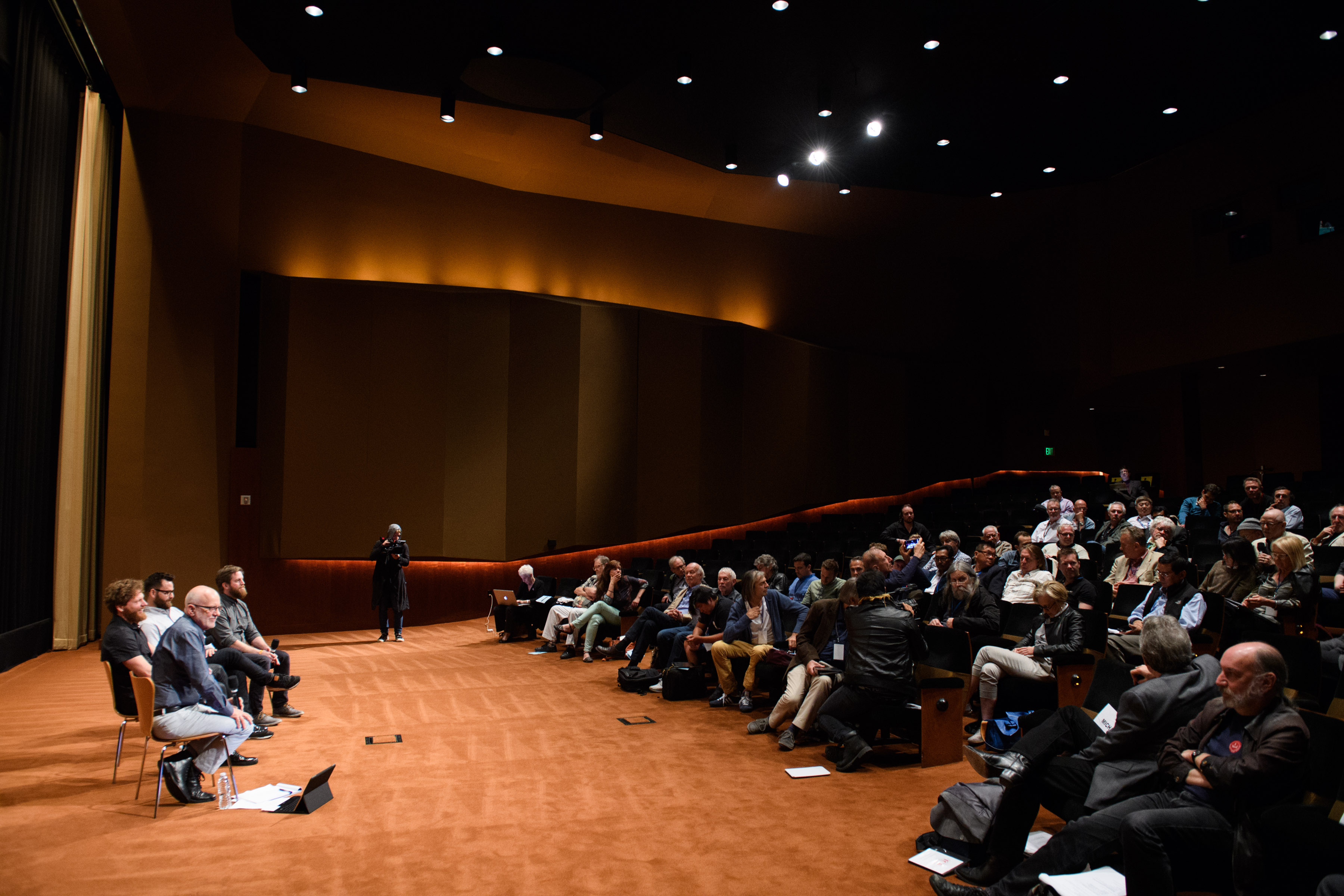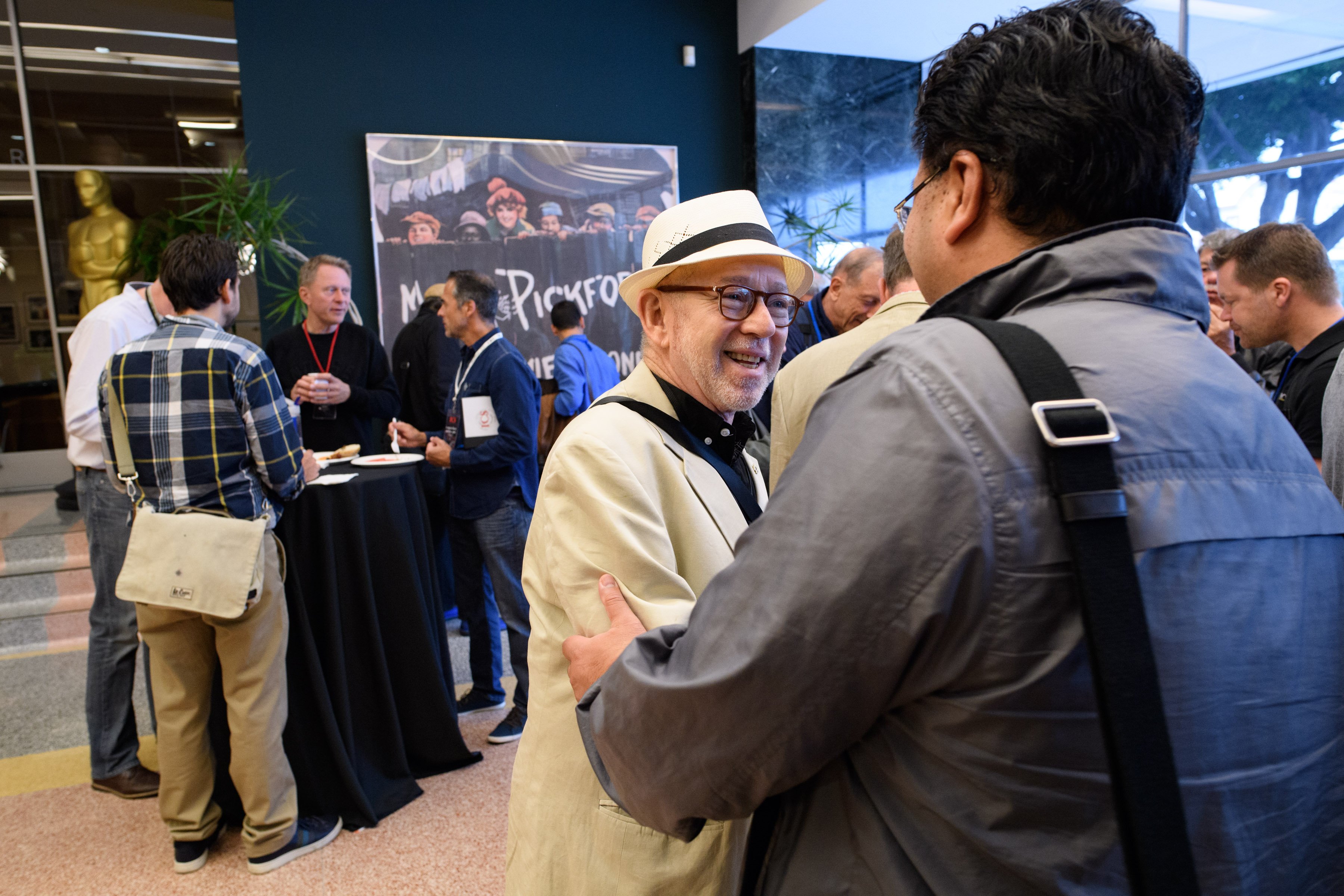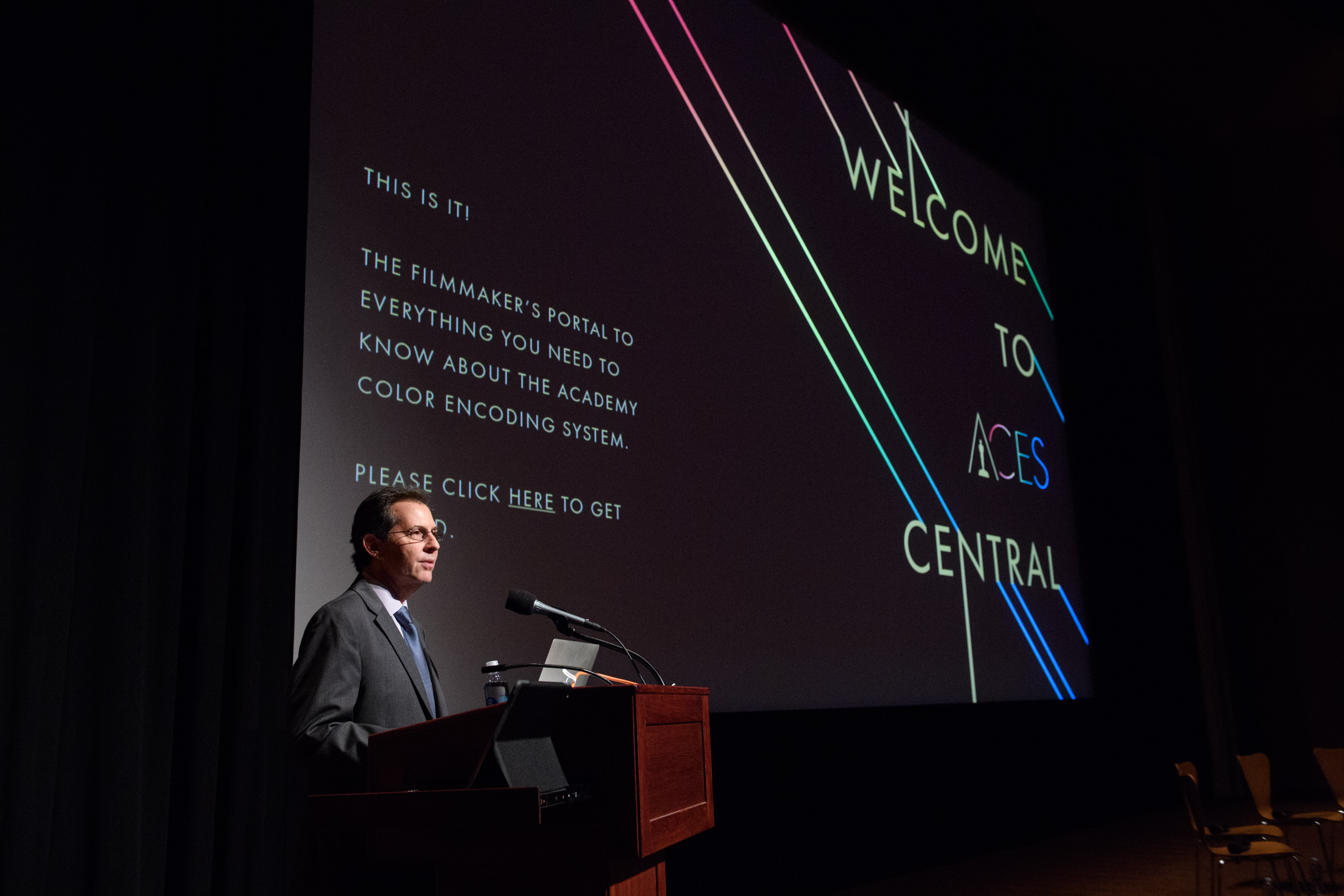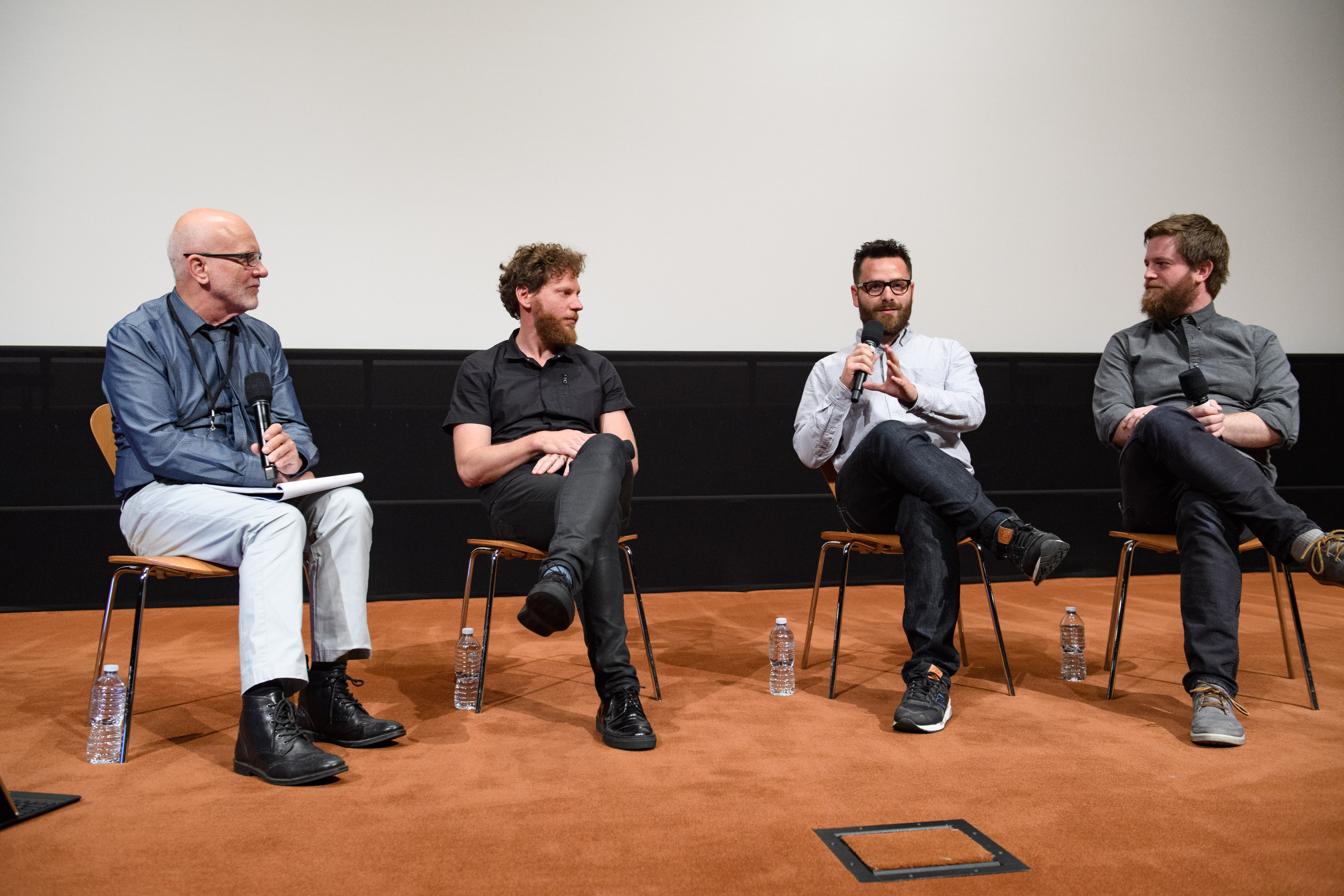
ICS 2016 – Part VIII: ACES at the Academy
The International Cinematography Summit offered a unique opportunity for motion picture professionals to discuss and demonstrate ideas.
ICS 2016
For this unique four-day event, the American Society of Cinematographers invited peers from around the world to meet in Los Angeles, where they would discuss professional and technological issues and help define how cinematographers can maintain the quality and artistic integrity of the images they create.

This portion of the International Cinematography Summit (ICS) took place at the Linwood Dunn Theater at the Academy of Motion Picture Arts and Sciences’ Pickford Center for Motion Picture Study. There, American Society of Cinematographers representative Dean Cundey, ASC greeted ICS attendees by noting the significance of the theater, named for the ASC member and visual effects pioneer who invented the optical printer. AMPAS Science and Technology Council managing director Andy Maltz also welcomed the international group of cinematographers to a day that would start off with a presentation about solid-state lighting and end with reports from the ASC Technology sub-committees. Another highlight was a guided tour of the Pickford Center’s archival vaults during the lunch break.

The venue was most appropriate for an in-depth conversation about the current state of the Academy Color Encoding System (ACES) that was launched at NAB in 2015 and is quickly becoming “the industry standard for managing color throughout the life cycle of a motion picture or television production.” Maltz reported on the current state of the new standard, noting that a long list of movies and all six major Hollywood studios have committed to developing an ACES-based archiving standard, and 25 companies have signed on to the ACES Logo Program.

How ACES is being used in production and post was discussed during a panel moderated by International Cinematographer Guild’s Michael Chambliss. The speakers included DIT/workflow supervisor Francesco Giardiello, Mytherapy chief colorist Dado Valentic and Legendary Entertainment director of postproduction technology Brandon Bussinger.
“What’s important about the workflow is that with ACES, the cinematographer regains the authority that digital took that away,” said Valentic, who has graded such ACES-compliant projects as the features Absolutely Anything, Dough and A Hundred Streets, as well as the ABC series Guilt. He noted that, for each project’s many different releases, “being able to re-use the same color decisions is very important.”

“The benefit is that ACES creates a color-managed workflow from the outset, with superior image quality; reduced postproduction time and cost; and the same look on every monitor and system,” Valentic said.
Using footage from Warner Bros.’ Knights of the Roundtable: King Arthur, Giardiello showed how he used ACES to match images from Alexa and RED, often a difficult task. Bussinger addressed, from the studio perspective, the importance of ACES. “It’s not a look, it’s a process,” he said. “It lets math be math and art be art. We can save lots of money and time by coordinating inputs and orders of operation.”
Bussinger said he would encourage filmmakers to use ACES because it brings consistency across equipment (cameras), departments, and applications (color platforms). “It provides a common framework that the studio and other departments can get behind, as well as VFX and post supervisors, because it was well-defined and understood how you chose what was on the screen,” he said. “That makes it less likely someone will change that.” Also, he noted, ACES gets rid of the need for “long conference calls that no one likes.” Giardiello agreed, reporting that, with ACES on King Arthur, communications are often quick Skype chats.
With regard to the details of ACES, Valentic said that, “bit depth is the most important factor.”
“I would rather work on 16-bit HD file than a 10-bit 4K file,” Valentic said. “The resolution isn’t even as important as bit depth. As a colorist, sometimes you have to move a pixel into a different value and after a certain point, pixels scream. That’s what happens in 10-bit, where you start seeing noise. It’s much smoother in 16-bit and you can be more precise.”
Attendee Steven Poster, ASC — president of IATSE Local 600, the International Cinematographers Guild — noted that, “end-to-end device-independent color management is the holy grail of digital cinematography.”
“It’s gratifying to see it go this far,” Poster said.

Another cinematographer asked why, even with ACES, some post houses still add “secret sauce.” Valentic answered that, from a colorist perspective, “we do like to create our own little secret recipes to make images look special or better than a competitors’.”
“It’s part of the art of color grading,” Valentic added, noting that the result is still ACES-compatible. “There will always be a tendency for every facility, colorist and color scientist to do this.”
Until last year, there was no royalty-free motion picture test material available to support the industry’s exploration of HFR, High Brightness (HB), HDR, wide color gamut and wider shutter angle. However, the Next Generation Cinema Technology project, begun in early November 2013 and consisting of Academy Sci-Tech Council members, staff, cinematographers and others, remedied that problem.
In March of 2014, a test shoot on the 4th floor common area of the Pickford Center for Motion Picture Study was staged “using selected objects with the intention of purposefully testing the limits of contrast, exposure and panning speed judder.”
Jim Houston, ACES Project Committee co-chair; Garrett Smith, Next Generation Cinema Technology Working Group co-chair; and Solid State Lighting Project Committee co-chair Josh Pines described the efforts to create “next-generation cinema technology test material.” Both of them also urged cinematographers to provide input on what they hope to see in future versions of test material from the Academy.
“We’re trying to figure out how we analyze this data,” said Pines. “At what points do golden eyes and average people see a difference? We’re not a standards body, but hopefully the material we shot will be useful.”






